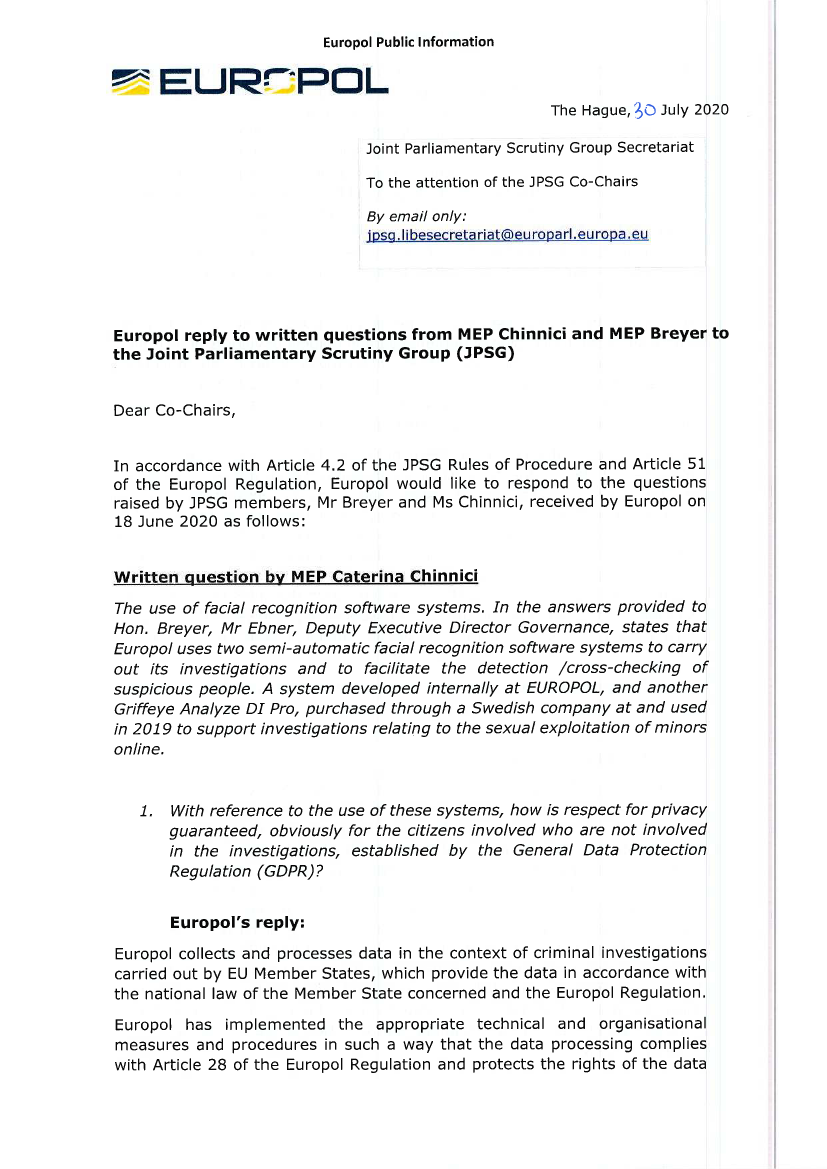
Europol
Public
I
nformation
l
EUR'-..POL
The
Hague,]O:uty
zOzO
Joint
Parliamentary
Scrutiny
Group Secretariat
To
the attention
of
the
JPSG
Co-Chairs
By
email only:
jpsg.libesecreta
riat@eu
roparl.eu
ropa,
eu
Europol
reply to
written
questions
from
MEP
Chinnici and
MEP
Breyer
to
the
Joint
Parliamentary Scrutiny
Group
(JPSG)
Dear
Co-Chairs,
In
accordance
with
Article
4.2
of
the
JPSG
Rules
of
Procedure and
Article
51
of
the
Europol Regulation, Europol
would like
to
respond
to
the
questions
raised by
JPSG
members,
Mr Breyer and
Ms
Chinnici, received
by
Europol
on
1B
June
2O2O
as
follows:
Written
question bv
MEP
Caterina Chinnici
The
use
of
facial recognition software systems.
In
the
answers
provided
to
Hon.
Breyer, Mr
Ebner, Deputy Executive
Director
Governance,
states that
Europol
uses
two
semi-automatic
facial recognition software systems
to carry
detection /cross-checking
of
suspicious
people. A
system
developed
internally
at
EUROPOL,
and another
Griffeye Analyze
DI
Pro,
purchased
through
a Swedish company
at
and
used
in 2019 to support investigations relating to
the sexual
exploitation of minors
online.
out
its
investigations
and
to
facilitate
the
1.
With
reference to the
use
of
these
systems,
how
is
respectfor
privacy
guaranteed, obviously
for
the
citizens involved
who
are
not
involved
in
the
investigations, established
by
the
General
Data
Protection
Regulation
(GDPR)?
Europol's reply:
Europol collects
and
processes
data in
the
context
of criminal
investigations
carried
out
by
EU
Member
States, which
provide
the
data in
accordance with
the
national
law
of
the
Member
State
concerned and
the
Europol Regulation,
Europol
has
implemented
the
appropriate
technical
and
organisational
measures
and
procedures
in
such
a
way
that the
data
processing complies
with Article
28 of
the
Europol Regulation
and protects
the
rights
of
the
data